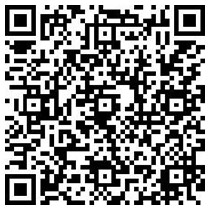Servo drives, also known as "servo controllers" or "servo amplifiers", are controllers used to control servo motors. They function similarly to frequency converters acting on ordinary AC motors. They are part of the servo system and are mainly used in high-precision positioning systems. Generally, servo motors are controlled in three ways: position, speed, and torque to achieve high-precision transmission system positioning. They are currently high-end products in transmission technology.
Basic Introduction
Servo drives are an important part of modern motion control and are widely used in automation equipment such as industrial robots and CNC machining centers. In particular, servo drives used to control AC permanent magnet synchronous motors have become a hot research topic at home and abroad. The current AC servo drive design generally uses a three-loop control algorithm based on vector control: current, speed, and position. Whether the speed closed-loop design in this algorithm is reasonable or not plays a key role in the entire servo control system, especially the speed control performance.

In the servo drive speed closed loop, the real-time speed measurement accuracy of the motor rotor is crucial to improving the dynamic and static characteristics of the speed control of the speed loop. In order to seek a balance between measurement accuracy and system cost, an incremental photoelectric encoder is generally used as a speed sensor, and the corresponding commonly used speed measurement method is the M/T speed measurement method. Although the M/T speed measurement method has a certain measurement accuracy and a wide measurement range, this method has its inherent defects, mainly including:
1. At least one complete encoder pulse must be detected during the speed measurement cycle, which limits the minimum measurable speed;
2. The two control system timer switches used for speed measurement are difficult to strictly maintain synchronization, and the speed measurement accuracy cannot be guaranteed in measurement situations with large speed changes. Therefore, the traditional speed loop design scheme using this speed measurement method is difficult to improve the speed following and control performance of the servo drive.
Working Principle
Currently, mainstream servo drives all use digital signal processors (DSPs) as the control core, which can realize relatively complex control algorithms, and realize digitalization, networking and intelligence. Power devices generally use drive circuits designed with intelligent power modules (IPMs) as the core. The IPM integrates the drive circuit internally, and also has fault detection and protection circuits such as overvoltage, overcurrent, overheating, and undervoltage. A soft start circuit is also added to the main circuit to reduce the impact of the start-up process on the drive. The power drive unit first rectifies the input three-phase power or mains power through a three-phase full-bridge rectifier circuit to obtain the corresponding direct current. After the rectified three-phase power or mains power, the three-phase permanent magnet synchronous AC servo motor is driven by a three-phase sinusoidal PWM voltage inverter. The entire process of the power drive unit can be simply described as an AC-DC-AC process. The main topology circuit of the rectifier unit (AC-DC) is a three-phase full-bridge uncontrolled rectifier circuit.

With the large-scale application of servo systems, servo drive use, servo drive debugging, and servo drive maintenance are all relatively important technical topics for servo drives today. More and more industrial control technology service providers have conducted in-depth technical research on servo drives.
Servo drives are an important part of modern motion control and are widely used in automation equipment such as industrial robots and CNC machining centers. In particular, servo drives used to control AC permanent magnet synchronous motors have become a research hotspot at home and abroad. The current AC servo drive design generally adopts a three-loop control algorithm based on vector control: current, speed, and position. Whether the speed closed-loop design in this algorithm is reasonable or not plays a key role in the entire servo control system, especially the speed control performance.
Basic requirements
Requirements for servo feed system
1. Wide speed regulation range
2. High positioning accuracy
3. Sufficient transmission rigidity and high speed stability
4. Fast response, no overshoot
In order to ensure productivity and processing quality, in addition to requiring high positioning accuracy, it is also required to have good fast response characteristics, that is, the response of tracking command signals must be fast, because the CNC system requires sufficient acceleration and deceleration when starting and braking, shortening the transition process time of the feed system and reducing the contour transition error.
5. Low speed, high torque, strong overload capacity
Generally speaking, the servo drive has an overload capacity of more than 1.5 times in a few minutes or even half an hour, and can be overloaded 4 to 6 times in a short time without damage.
6. High reliability
The feed drive system of the CNC machine tool is required to have high reliability, good working stability, strong adaptability to temperature, humidity, vibration and other environments, and strong anti-interference ability.

Requirements for the motor
1. The motor can run smoothly from the lowest speed to the highest speed, and the torque fluctuation should be small, especially at low speeds such as 0.1r/min or lower, there is still a stable speed without creeping.
2. The motor should have a large overload capacity for a long time to meet the requirements of low speed and high torque. Generally, DC servo motors are required to be overloaded 4 to 6 times within a few minutes without damage.
3. In order to meet the requirements of fast response, the motor should have a small moment of inertia and a large stall torque, and have the smallest possible time constant and starting voltage.
4. The motor should be able to withstand frequent starting, braking and reversing.
Application fields
Servo drives are widely used in logistics, injection molding, textile machinery, packaging machinery, CNC machine tools, etc.



Cpyright © 2023 Shenzhen Sinee Electric Co.,Ltd. A certain ICP preparation No. 00000000-0



